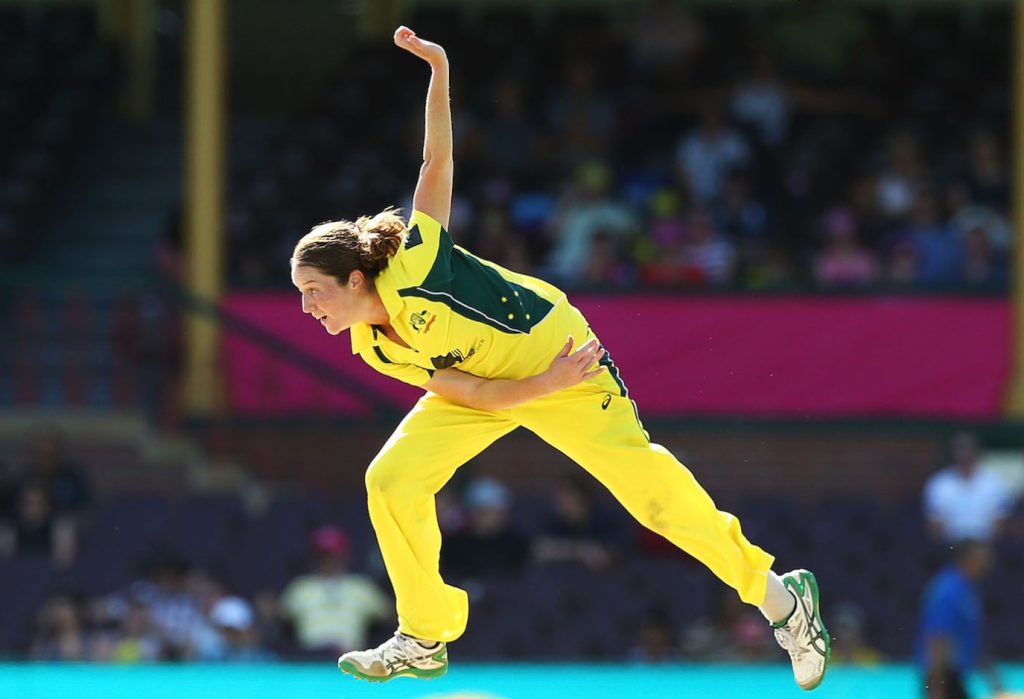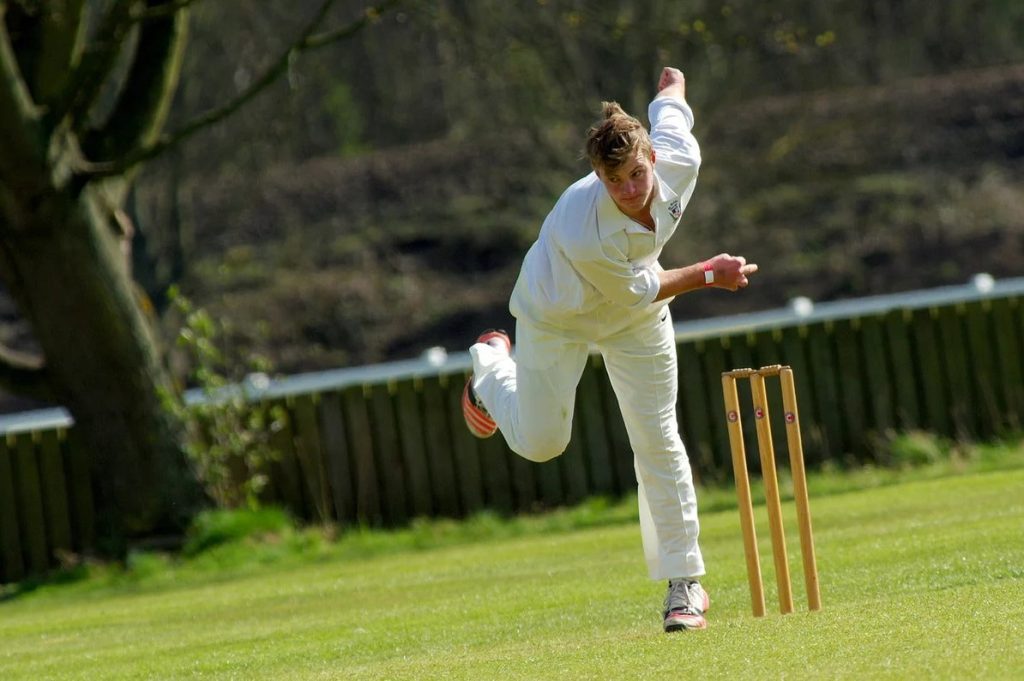Swing Bowler: In the world of cricket, the ability to move the ball is a critical skill for bowlers, especially for fast bowlers. While the traditional swing bowling—both outswing and inswing—is well-known, reverse swing is a more enigmatic and complex art. Reverse swing, a form of swing bowling where the ball moves in the opposite direction to conventional swing, can often baffle even the best batsmen. This article delves into the concept of reverse swing, its techniques, the science behind it, and how it has shaped the careers of legendary bowlers in cricket.
Swing Bowler: What is Reverse Swing?

Swing Bowler: Reverse swing refers to the phenomenon where the cricket ball swings in the opposite direction to what is expected given its seam position and speed. In conventional swing, a ball moves towards the side with the rougher surface. However, in reverse swing, the ball swings in the opposite direction, and this typically occurs when the ball is older and the rough side is exposed. Reverse swing is most prominent when the ball is bowled at high speeds (typically above 85 mph or 135 km/h) and is generally seen as a weapon for fast bowlers.
Key Characteristics of Reverse Swing:
- The ball swings in the opposite direction of conventional swing.
- It generally occurs when the ball is old and has a rough side.
- High speeds (over 85 mph) are often required to generate reverse swing.
- It can deceive batsmen by changing direction unexpectedly.
The Science Behind Reverse Swing
Swing Bowler: Understanding the science behind reverse swing involves a combination of physics, aerodynamics, and the properties of the cricket ball. There are several factors that contribute to reverse swing:
- Ball Condition: The ball’s condition plays a significant role in generating reverse swing. A ball used for a long time will naturally have one side become rough while the other side remains smooth. The rough side generates turbulence in the air, while the smooth side allows the air to flow more smoothly.
- Speed and Seam Position: For reverse swing to occur, the bowler must bowl at high speeds. At higher speeds, the air does not have enough time to move smoothly over the ball. As a result, the rough side of the ball causes irregular airflow, leading to the ball swinging in the opposite direction. The seam’s position can further influence the swing.
- Seam Orientation: To generate reverse swing, bowlers typically orient the seam towards the slip fielders or gully, while using wrist and seam positioning to create a difference in air pressure on both sides of the ball. This creates turbulence that results in the ball swinging late and in the opposite direction.
- Air Resistance: When a fast bowler releases the ball, the air resistance on the ball is a key factor. As the ball travels through the air, the rough side causes turbulent airflow, which makes the ball move unpredictably. The smooth side, on the other hand, moves the air in a more laminar fashion, allowing the ball to shift late.
Bowling Techniques for Reverse Swing

Swing Bowler: Mastering reverse swing requires skill and understanding of various techniques. Here are some essential aspects of reverse swing bowling:
- Grip and Seam Positioning: The bowler’s grip is crucial for controlling reverse swing. The ball is usually held with the seam pointing towards first or second slip. By positioning the ball in this way, the bowler can control the direction and movement of the ball through the air.
- Wrist and Finger Position: The wrist and fingers play a significant role in reverse swing. To swing the ball in the opposite direction, bowlers often use their wrist and fingers to impart additional revolutions to the ball, creating late movement. The wrist should be firm, with the fingers placed on the seam to guide the ball effectively.
- Release Speed and Angle: Reverse swing is typically generated at higher speeds. Fast bowlers aim to release the ball at speeds greater than 85 mph. The angle at which the ball is released also influences how much swing it generates. Bowlers use their body momentum, step-up, and arm action to generate the necessary speed.
- The Old Ball: Reverse swing is most effective with an old ball. As the ball becomes older, the rough side becomes more prominent, and this roughness helps generate turbulence in the air, leading to reverse swing. Bowlers often use this to their advantage by focusing on maintaining the ball’s condition.
Notable Bowlers Who Mastered Reverse Swing

Swing Bowler: Over the years, many fast bowlers have become renowned for their ability to reverse swing the ball. Some of the greatest exponents of reverse swing include:
| Bowler | Country | Career Span | Wickets Taken | Bowling Speed | Reverse Swing Influence |
|---|---|---|---|---|---|
| Wasim Akram | Pakistan | 1984–2003 | 916 | 85-90 mph | Widely regarded as the best reverse swing bowler in cricket history. |
| James Anderson | England | 2003–Present | 640+ | 80-85 mph | Known for his late swing and ability to generate reverse swing. |
| Dale Steyn | South Africa | 2004–2019 | 439 | 90+ mph | Famous for his ability to reverse swing at high speeds and with precision. |
| Curtly Ambrose | West Indies | 1988–2000 | 405 | 85-90 mph | Master of reverse swing, known for his pace and bounce. |
| Shoaib Akhtar | Pakistan | 1997–2011 | 444 | 90+ mph | His sheer pace and ability to reverse swing the ball made him a deadly bowler. |
Swing Bowler: The Importance of Reverse Swing in Modern Cricket

Swing Bowler: Reverse swing has played a crucial role in the evolution of modern cricket. It allows fast bowlers to stay competitive even when conditions do not favor swing or seam movement. In particular:
- Limited Overs Cricket: In ODIs and T20s, where the ball gets old quickly, reverse swing becomes an invaluable tool for fast bowlers, allowing them to maintain pressure in the latter stages of the game. Reverse swing can be lethal in the death overs, where batsmen are looking to attack.
- Test Cricket: In Test matches, reverse swing is particularly effective in the latter stages of the match when the ball has aged and the pitch has become more abrasive. Reverse swing can be the difference between taking crucial wickets and failing to make an impact.
- Deceptive and Unpredictable: Reverse swing is often deceptive. Since it happens late in the delivery, batsmen struggle to judge when the ball will change direction. This makes it particularly challenging to play, especially when faced with a bowler who can consistently generate reverse swing.
Swing Bowler: Challenges Faced by Reverse Swing Bowlers
Swing Bowler: While reverse swing can be an incredibly effective weapon, it comes with challenges:
- Ball Maintenance: Generating reverse swing requires the ball to be in a specific condition, often rough on one side. Bowlers must work diligently to maintain the ball’s condition by ensuring one side stays smooth while the other becomes rough.
- Bowling Under Pressure: Reverse swing is a high-skill craft that requires precision. In the heat of a match, maintaining the focus to consistently reverse swing the ball under pressure can be difficult.
- Physical Demands: Generating the high speeds required for reverse swing puts a significant strain on a bowler’s body. Injury risks are higher due to the repetitive nature of fast bowling at such speeds.
Swing Bowler: Reverse swing bowling is an art that combines the science of aerodynamics with the skill of fast bowling. Bowlers who master reverse swing are able to exploit the ball’s condition, the physics of airflow, and their own skill to create movement that confounds even the best batsmen. Legends like Wasim Akram, James Anderson, and Shoaib Akhtar have proven that with precision and control, reverse swing can change the course of a match.

Swing Bowler: The evolution of reverse swing continues to shape modern cricket, and as new bowlers emerge with a keen understanding of this art, the future of reverse swing bowling looks as dynamic as ever. Whether in Test matches, ODIs, or T20s, reverse swing remains one of the most thrilling and crucial aspects of fast bowling.

